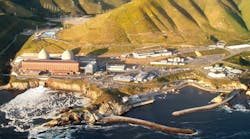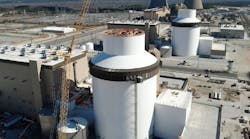I don’t have the evidence to prove it has never happened before, but I can say this event is as rare as hen’s teeth. The leadership from six communities in the vicinity of a 2000-plus MW nuclear power plant filed a lawsuit….wait for it… in opposition to its planned closure. You read correctly! The communities surrounding the Diablo Canyon nuclear power plant in San Luis Obispo County, CA, sited potential economic harm if PG&E closes the plant by 2025 as proposed to the CA Public Utility Commission.
Unfortunately, over the years, some nuclear plants and other major power generating facilities like coal plants and even hydroelectric dams have been the subject of opposition. These minority occurrences always make headline news. Of course, the majority of plants that are operating symbiotically within communities across the country don’t make any news. However, they all have something in common. They are providing economic benefits in the form of jobs, tax revenues, support to local businesses and frequently, recreational opportunities via parks and green-space, in their communities.
While clearly a bit self-serving, it is still refreshing to see communities rise in support of the power plants and their employees that faithfully supported them for many years. What will replace the economic and other benefits many of these facilities provide to communities and regions? As large baseload plants come under fire because they are not using the cheapest fuel this month or cannot economically cycle like some newer technologies, they are being retired or sold to private developers. Almost always, jobs, taxes, recreational facilities and other amenities are lost. Is this the price of progress?
I’m not convinced that baseload nuclear and coal plants are the buggy-whip manufacturing plants of the 21st century. There are claims that organized capacity and energy markets are causing the premature demise of baseload plants in favor of gas and renewables that can respond to short term price signals. While many utilities favor gas today, this fuel has a history of price volatility and delivery issues. Can we be sure history will not repeat itself? Renewables, which are definitely in vogue, are not available 24/7 and their attractive pricing in the right geographic regions is still based on tax benefits. So a relevant question is: are organized markets delivering the optimal outcome for the long term or do we need to revisit the process?
A number of utilities with nuclear and coal power plants that have been uncompetitive in recent market auctions have filed petitions with their commissions for subsidies to avoid having to shutter their baseload facilities. While not entirely different from the tax benefits recently reauthorized for renewables, the petitions are hotly contested and not getting too far. Proponents argue nuclear baseload plants should be awarded credit for carbon neutrality and long term fuel price certainty. Similarly, coal plants have the ability to lock in fuel supply contracts for extended periods and operate around the clock for months at a time. One argument has been there should be a baseload capacity set-aside which is valued differently from the remainder of the capacity in power market auctions. This might help ensure fuel and plant diversity that would otherwise not occur. One has to wonder if all of those massive, inertia responsive baseload generators go away, will the grid be less stable and more susceptible to cascading disruptive events.
I don’t know the answer to the grid’s performance following the loss of an entire class of generating units. I’m sure it can be modeled. I’m less sure we can be certain about the future price and supply of various fuel types and the secondary impacts of retiring a fleet of tried and reliable workhorse power plants. In a way, it is like one of the many critical concerns that arise over the potential loss of a plant or animal species. We don’t know all the consequences until it is too late.
I hope we don’t just let our baseload nuclear and coal plants that served the U.S. electric market faithfully for decades go extinct without a fight. Hopefully, more communities will rise up to at least go on record about all the benefits these facilities provide that might not be easily quantified or readily replaced with the options on the table today.


